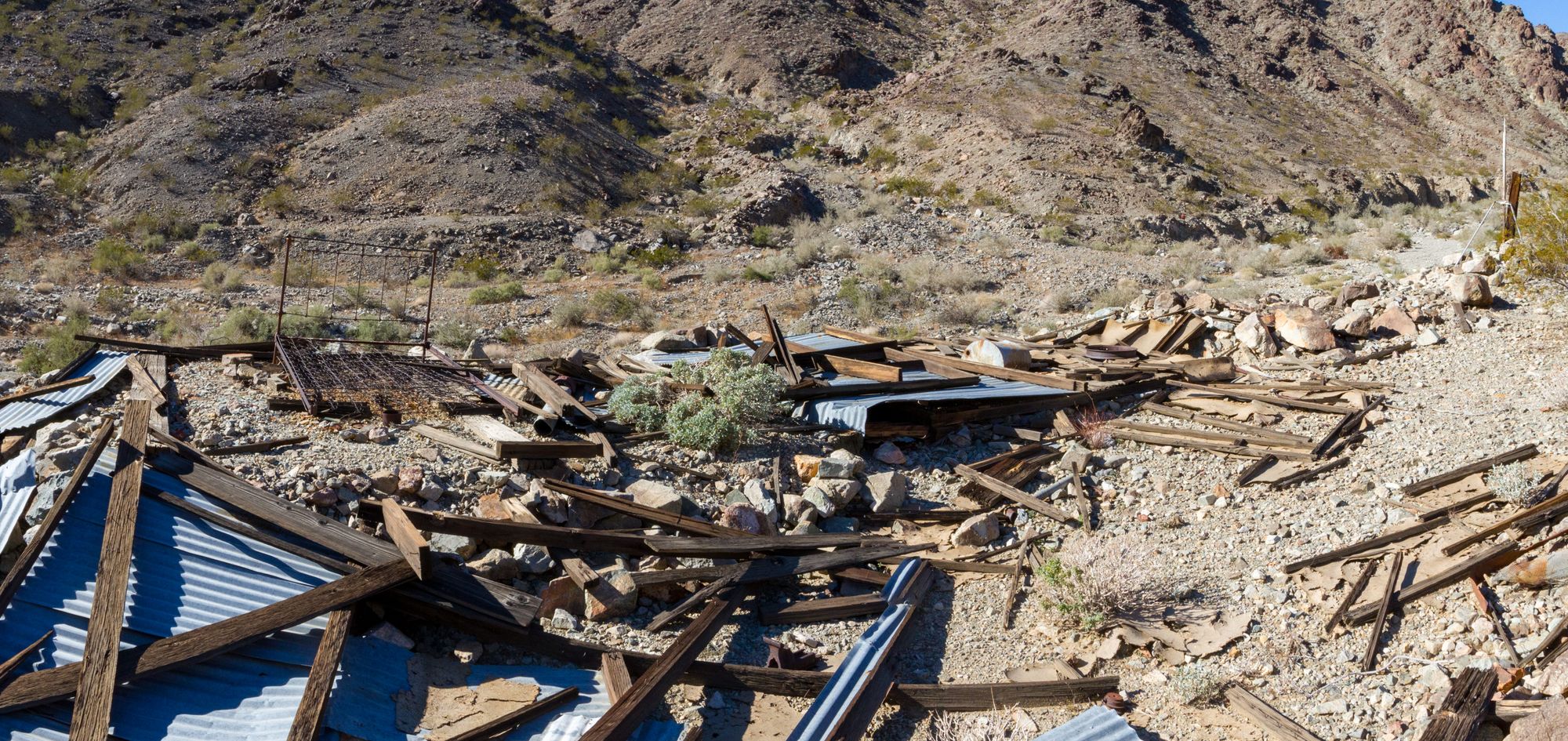The Outlaw Mine is one of those places that beckons to the adventurous explorer, not for what remains, but for its sheer remoteness. I knew there wouldn't be much left at the site, but the allure of visiting one of Joshua Tree's most isolated mines was irresistible.
The history of the Outlaw Mine is as sparse as the desert landscape surrounding it. In 1949, it was reported as a gold and silver operation owned by W.P. O'Connor and J.P. Hayes. The mine already had a 100-foot shaft at that time, but only assessment and road work were done that year. By 1968, the mining camp was already in decline. Two lonely shacks stood guard, but the headframe had already collapsed into the mine shaft.

Today, the site tells an even quieter story. The buildings that once housed dreams of striking it rich have long since fallen, their wooden bones bleaching in the relentless desert sun. The Park Service, in a nod to safety (and perhaps a touch of irony given the mine's name), has gated the shaft. You would think a place so infrequently visited wouldn't warrant such attention. Even the most remote corners of Joshua Tree aren't exempt from modern precautions.




